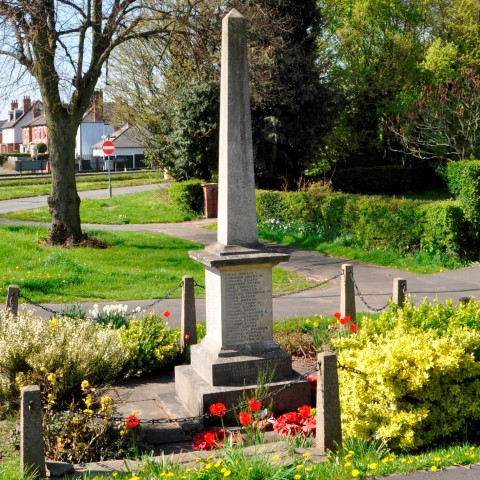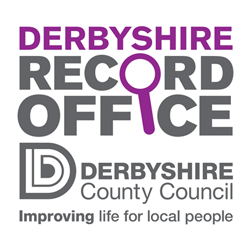An Ideal Home – Ann Smith
Women born in the first part of the 20th century envisaged futures for themselves that would have struck a chord with both their 19th century grandmothers and 21st century granddaughters.
Ann Smith was born in 1938 at Derby’s Nightingale Road Maternity Hospital and is unequivocal about her goals and aspirations:
All I wanted was a baby and a family.
But Ann, who married a farmer, also tasted independence before her marriage and went on to determine – and win – the right sort of living conditions in which to bring up four children.
Her story shows how she, as a representative of her era, began to shape her own life instead of treading a predictable path taken by previous generations.
William Edward Higginbottom, from Ockbrook worked at Rolls Royce and married Muriel, a Station Master’s daughter from Weston on Trent.
They set up home in Newbold Avenue, Borrowash, described by their youngest child Ann as
A lovely house with porches.
There was a nine year gap between Ann and her older brother; but Bill was happy for his little sister to tag along when they played by the nearby canal:
My brother was a good swimmer; he used to swim from the bridge right up to the other end and the water was so clean and beautiful – when it froze in winter you’d see skaters sliding on it.
Bill always said ‘Are you coming in?’ and I used to say ‘Well, I can’t swim’, but because he was there I was all right paddling. He used to watch me you see.
 Ann and her father, William Higginbottom, holding hands at the front, Skegness
Ann and her father, William Higginbottom, holding hands at the front, Skegness
Ann’s childhood village was quiet, but the slower pace of life had advantages:
We used to walk to the bridge and then come back again. You used to go over the railway bridge and there was a big farm house and they had apples hanging down over the edge and me and my friend used to go apple bobbing!
Down Newbold Avenue we went to one of the gardens at the back of the farm and we loved getting gooseberries off that bush!
And we used to play Rosie Apple and knock at the door and run!
There was one man down Newbold Avenue and he didn’t like it at all! He used to chase us!
But in those days it was lovely because you used to meet under the lamp at the bottom of the Avenue. You couldn’t do it now! You wouldn’t trust your children to go out at night and meet under a lamp would you?
There wasn’t much to do, but in those days, you could trust people.
A favourite place for a rendezvous was outside the fish and chip shop near the shoe shop and if fish and chips were too expensive, a cheaper alternative was chips and fish bits. And you know, it was nicer to eat them out of the paper.
 Ann’s parents, Muriel and William Higginbottom.
Ann’s parents, Muriel and William Higginbottom.
Ann’s mother, Muriel worked at the local factory; GIC (General Industrial Cleaners) and the firm staged a carnival for villagers, workers and their families in the back field:
I was Robin Hood and my two friends in Newbold Avenue were in it. One was a nurse and one was the patient. I’ve got the pictures and it was lovely.
 Right, Ann as Robin Hood and friends, Doreen Porter as the nurse
Right, Ann as Robin Hood and friends, Doreen Porter as the nurse
and Barbara Theobold as her patient at a GIC carnival
Otherwise, the cricket field was a popular venue; a room attached to The Wilmot pub served as a bit of a youth club with table tennis and the birth of puppies at a local Mill was a major event:
We used to go and look at this big Mill and a man lived there with a dog and the dog had puppies. And I can remember wanting to go to the Mill and asking this man if I could have one. I said ‘Can we have one, Mum?’
‘No,’ she said.
‘He can’t find homes for them but we don’t want any puppies’.
However, a little later, Ann was allowed to keep a pet dog and it was useful in more ways than one:
Dad was really strict. If you went out you just had to be back on the last bus and when I was a teenager, I used to take my dog a walk. I walked down to Fares factory – that was my meeting place to see my boyfriend. Dad used to say ‘You taking that dog a walk again?!’
It was the only thing that could get me out! He wouldn’t let me out of the house otherwise!
Ann attended Primary school in Borrowash and then took the bus to Spondon HouseSchool for Secondary education.
She was an enthusiastic member of the tennis team and enjoyed cookery but her interest in needlework influenced her choice of job.
Aged sixteen, Ann Higginbottom was employed as a sales assistant at Hunt’s dress shop in St Peter’s Street, Derby.
It was a really lovely shop – high class fashion and I just loved it!
Lady Scarsdale from Kedleston Hall was a regular customer; she was really suntanned all year round because she went sunbathing in their walled garden where nobody could see her! And she used to buy armfuls of dresses – three at a time!
Evening dresses were displayed downstairs with suits and coats on the first floor. A commission system enabled Ann and the other assistants to buy some of the clothes for themselves.
I’ve still got two – blue chiffon and sequins and a pink one but I couldn’t wear them now because I’ve lost my my 22 inch waist . But I wish I could!
The clothes were wonderful and making new friends away from the village was another advantage of working at Hunt’s.
There were three of us girls together. We used to wander out to Darley Park, Trent Lock and the River Gardens at lunchtime. And we met two really nice boys who belonged to a canoeing club and they asked us to go in a canoe!

Ann, left, with Spondon House School friends., Rhoda and Christine.
Well I still couldn’t swim but that wasn’t going to stop me! And we went in separate canoes as well with them, but we weren’t frightened! My boy was really nice – his name was Michael and he was a draughtsman – and I went out with him for eighteen months – until I met the farmer…..
Ann’s particular friend at work, Noreen Buxton, came from a farming family and persuaded Ann to join her at the Young Farmers’ Spring Dance at the Derby Assembly Rooms.
It was an exciting prospect and very different from the limited social opportunities in Borrowash. Ann looked her best in a glamorous evening dress from Hunt’s and was soon spotted by a young man.
He was called Pete Smith and he said to his mate ‘Oh – she’s quite nice – and his friend said ‘Yes – and she’s from Borrowash’.
Noreen made the next move by inviting Ann to join her and her boyfriend on a trip to the cinema, suggesting
Why don’t you ring Pete?
It was no sooner said than done.
Michael and his canoe were swiftly consigned to history and after an eighteen month courtship; the 20 year old Ann Higginbottom married Pete Smith, a farmer from Ambaston; with Noreen as bridesmaid
After a church wedding in Ockbrook and a reception at Grange Farm restaurant, the newlyweds honeymooned in Devon at Babbacombe’s Glenn Hotel.

Ann and Pete Smith on their wedding day
Attempts to masquerade as an old married couple were foiled when they came down to breakfast the day after the wedding:
When we got there we found this big white horseshoe on the table from everyone at work. It was just lovely!
But on return from honeymoon, Ann found that a husband at the breakfast table was not the only change in circumstances that she faced as Mrs Smith Junior.
Her father in law thought that a woman’s place was in the home and farm and the keen young assistant at Hunt’s had to give up her job.
I had loved that job and even biked in to help them out when a regular girl was on holiday.
But Pete encouraged her in other ways, suggesting that she enter the Miss Derbyshire Young Farmer Contest and she was picked for the Finals at the King’s Hall in Derby.
I had to walk around the stage and talk about farming – Pete insisted that I went in for it!
She came second and repeated the triumph at the De Montfort Regional Final – wearing a unique pink satin ball gown from Hunt’s.
The Hunt’s gown notched up another success when Ann wore it again for the Butlin’s Miss Pink Lady holiday competition.
This time she was the winner and carried off first prize – a bottle of appropriately pink champagne.
But not everything worked out so well.
Pete, his father and two brothers were tenant farmers in Ambaston and Ann’s fist marital home was a farmhouse belonging to the estate.
She hated it.
The house was dark and dingy and the kitchen was dominated by old fashioned stone slabs, surrounded by wood and brick, used in former years to salt meat and bacon. It was difficult to clean beneath the brick and there was no room for storage units.
But the ugly slabs were cosmetic; other imperfections were a health hazard.
Well, the water – it used to be damp right up the wall and the bedrooms were wet and damp.
The walls were wet – but it was even in the beds! We used to wake up and touch the bedclothes and they were wet.
We had to move downstairs – it was awful, awful!
And we had floods! We had two floods there; I woke up one morning and the water was coming through one door and out the other – the dog was whimpering and whining – oh it was a terrible place!
Ann’s first concern was for her young family:
This man came round from the estate office and I said, ‘I can’t have children all sleeping in one room!’
She refused to put up with a house that she considered to be uninhabitable and as a young woman in her early twenties, decided to face down the male authority figures from the Estate Office:
They promised that they were going to do this, that and the other – and they came nowhere near! You go up to the Estate Office at the castle and I saw a man – his name was Hubbard and I said ‘When am I going to get a decent bathroom and a nice big tank cupboard in it?
‘Oooh, we don’t’ know when we’ll get you that.’
So I said’ Well, where would you put your babies’ nappies then?’ and I used to try my hardest to get through and they wouldn’t, they just wouldn’t come out and do it.
Then they came and pulled all the ceilings down!
It was five years of hell! Your first years of marriage should be the happiest years of your life – well they weren’t for me!
I’d have rather lived in a caravan!
Eventually, Ann took unilateral action.
Accompanied by her mother, she walked all the way from Borrowash to the Council Office in Spondon where she demanded a Council House.
I said that where I was living was unfit for babies and they got me a Council House in a fortnight.
We moved to 49, Hawthorne Avenue in Borrowash and it was just lovely.
Pete was happy to live in a Council House and commute to work but his father was furious.
His Dad was terrible about it. He said ‘No son of mine is going to live in a Council House’. He said it was common and there was a stigma about it. Pete loved it and I loved it but he wasn’t having it!
Ann’s father in law and brother in law clubbed together and with some money from Pete to make up the sum, the young Smiths bought a farmhouse in Thulston.
First impressions were not auspicious:
It was blooming horrible to start with.
It was built, I think in 1806. There was a massive big hole – a cellar.
People kept saying ‘It’s unusual, it’s nice’.
I’d say ‘Oh no its not. It gives me the creeps!’
It was big, massive. We filled it in but you don’t know what’s under your floor, do you?
When we had a party there, we’d say ‘Now don’t bounce on the floor too much there’s a cellar down there’. I hated it. I hated it more than ever!
A creepy cellar was not the last of Ann’s problems.
Three elderly ladies, the Riley sisters were the previous inhabitants and living conditions were primitive:
There was nothing in here, no sink – nothing. They used to do all the washing right up the other end of the house and its still there – a great big copper for the washing. So you had to go right up there and half way down here. There was a big sink and one toilet.
You’d got to go right up there to the toilet.
There was a horrible back stairs and the old ladies had to wash their hair upstairs in this wash basin. I said to Pete, ’I want a nice sink unit,’ and he said
‘Well – where do you want it?’
I said ‘I want it on that side because I don’t want to be looking onto a yard with cows in it.’
There was no hot water and he did everything we had to. He made me lovely units but he just had to. There was no way I’d have been happy with a toilet like that. You see, this is the difference when you’re brought up in a house that’s got everything. I know what people say about Council Houses but you’ve got your toilets haven’t you and a bath and everything is lovely.
Ann refused to have a repeat of the Ambaston experience and the young family remained in the Borrowash house until the Thurston property was habitable. She had the confidence and sheer determination to hold out for what she wanted.
Life in Thulston was lonely at first; alleviated by Ann’s mother Muriel who walked across the fields from Borrowash to give her daughter a bunch of daffodils on Mothers’ Day.

Ann with her children, from left, Tanya, Anthony, Debbie and Richard.
Not many people of Ann’s age lived nearby, but fortunately, another young family turned up in the village; a friend for Ann and playmates for Tania, Anthony, Richard and Debbie.
And life on the farm had some distinct advantages.
With that way of life, you got to see your husband all the time; every day – and you could share the life. You’d see him for coffee and dinner and tea.
Ann enjoyed living and working with livestock on the farm:
We kept pigs – we had about 100. One day Pete brought in a tiny pig, the runt of the litter and its skin was so soft it was like silk. It was ill so we put it in the oven to keep warm when we went out to the pictures! We didn’t cook it – just tried to keep it warm wrapped up. It did die eventually and I was so upset!

Tanya, Richard, Anthony and Debbie with lambs at
the family farm, Grange Farm in Thulston
The Smiths kept sheep and lambs and sometimes the children took the animals for walks in the middle of the road. Young lambs were bottle fed in the farmhouse.
I loved the animals and cried over them. I cried when the lambs died and I could never bear to see them being herded off to market and tagged. Not the bottle fed ones.
And sometimes, Thulston was host to unusual visitors:
I remember when they shot that film, Women in Love at Elvaston Castle near to where we lived.
It was a good film, very interesting but the film crew came down here and said ‘Would you mind shutting your corn grinder thing off because it’s disturbing the filming up there?’
We watched the film years later on the television and of course our daughter Tania had her big wedding ‘do’ at the castle at night.
Ann still lives at her farm in Thulston and three years ago, finally succeeded in getting the entire house modernised to her satisfaction with a wonderful kitchen and a lovely wood burner.
But her joy in finally achieving the home of her dreams was sadly not shared by Pete who died three years ago.
He only ever saw the kitchen.
It was so sad – just when we got our beautiful house, he died – just suddenly.
We’d been out the night before at The Royal Oak and then the next morning, I took him his cup of tea and his head went to one side. He had an aneurysm and just died like that. It was terrible.
But Ann, who still lives in Thulston, retains the positive outlook on life that has sustained her good times and bad.
I’ve got a lovely family and great friends and you know – with an aneurysm, he could have died at any time. I was lucky to have had him for 51 years – that’s the way to look at it.
We were both lucky.
Helen Clark.






